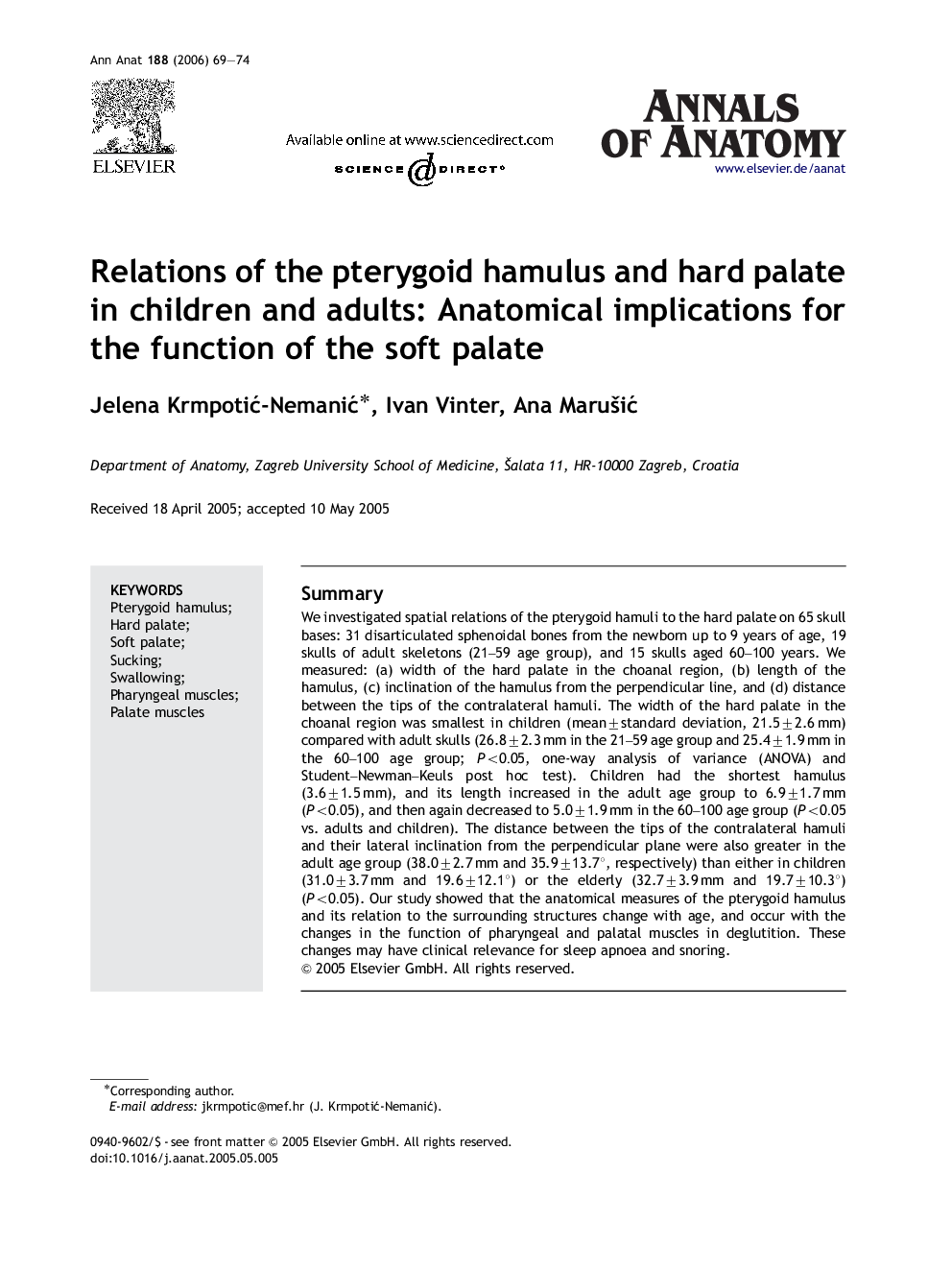| Article ID | Journal | Published Year | Pages | File Type |
|---|---|---|---|---|
| 8463294 | Annals of Anatomy - Anatomischer Anzeiger | 2006 | 6 Pages |
Abstract
We investigated spatial relations of the pterygoid hamuli to the hard palate on 65 skull bases: 31 disarticulated sphenoidal bones from the newborn up to 9 years of age, 19 skulls of adult skeletons (21-59 age group), and 15 skulls aged 60-100 years. We measured: (a) width of the hard palate in the choanal region, (b) length of the hamulus, (c) inclination of the hamulus from the perpendicular line, and (d) distance between the tips of the contralateral hamuli. The width of the hard palate in the choanal region was smallest in children (mean±standard deviation, 21.5±2.6 mm) compared with adult skulls (26.8±2.3 mm in the 21-59 age group and 25.4±1.9 mm in the 60-100 age group; P<0.05, one-way analysis of variance (ANOVA) and Student-Newman-Keuls post hoc test). Children had the shortest hamulus (3.6±1.5 mm), and its length increased in the adult age group to 6.9±1.7 mm (P<0.05), and then again decreased to 5.0±1.9 mm in the 60-100 age group (P<0.05 vs. adults and children). The distance between the tips of the contralateral hamuli and their lateral inclination from the perpendicular plane were also greater in the adult age group (38.0±2.7 mm and 35.9±13.7°, respectively) than either in children (31.0±3.7 mm and 19.6±12.1°) or the elderly (32.7±3.9 mm and 19.7±10.3°) (P<0.05). Our study showed that the anatomical measures of the pterygoid hamulus and its relation to the surrounding structures change with age, and occur with the changes in the function of pharyngeal and palatal muscles in deglutition. These changes may have clinical relevance for sleep apnoea and snoring.
Related Topics
Life Sciences
Biochemistry, Genetics and Molecular Biology
Cell Biology
Authors
Jelena KrmpotiÄ-NemaniÄ, Ivan Vinter, Ana MaruÅ¡iÄ,
